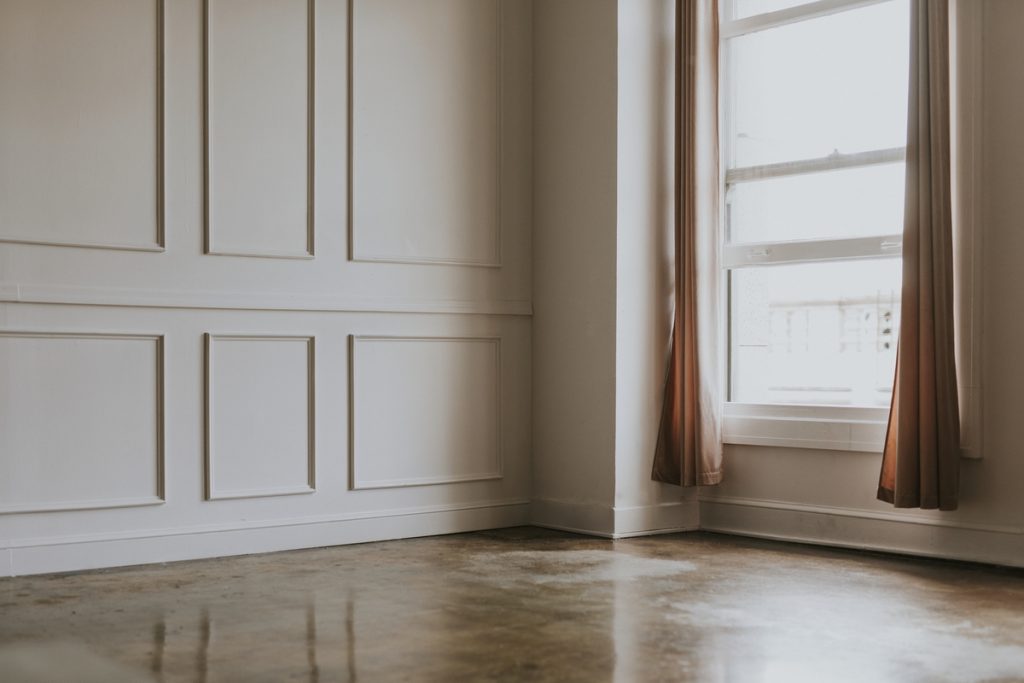What’s that musty smell? That’s one refrain you don’t want your guests to be playing this festive season and a telltale sign of dreaded damp in your home.
If you live in Britain, no doubt at some point you’ll have resided in a dwelling that is less than dry. Here at IDEAL, one of our editors rented a basement flat in London that sprouted a mushroom-type growth on the wall in winter – a not so uncommon occurrence it seems.
Indeed, The Times tells the story of one homeowner who found a mustard-coloured mushroom-type growth proliferating between the back wall of her son’s bedroom wardrobe and the outside wall, and let’s be honest here; we’re surprised this merited an article in a national newspaper. It’s that commonplace.
Perhaps unsurprisingly, too, The Independent highlights that 61% of renters in the UK have suffered damp, mould or leaking roofs. However, it’s’ not just renters that have a damp problem. In fact, it’s undeniable; Britain, as a whole, has a damp problem.
As Birmingham Mail explains “British houses are so damp due to a mixture of the nation having one of the oldest housing stocks in Europe and damaging building practices’’. This is because “Solid single skin brickwork, which makes up much of UK housing, is more prone to damp than double skin with cavity walls”. This explains a lot.
Moreover, the damp weather we experience here in the UK combined with increasing rainfall due to the climate crisis only exacerbates the problem, making our homes more vulnerable to damp. So, the big question; how can you protect your home from the dampness of the season? Read on…
WHAT IS DAMP?
Damp is not something that can be easily defined, but an easy way of imagining it is like fog. You know that misty stuff you see rising off fields on a cold morning? Or, if you’ve ever stood at the edge of a lake and felt the damp hit your face on a warm day? Damp is like that, but indoors.
Damp isn’t actually the problem; it’s a symptom of a deeper, lurking issue, and, as such, it’s what causes it that we need to be aware of. Water can cause problems anywhere in your home — inside walls, basements, under floorboards and generally anywhere you might not normally see it.
If you have water coming through a ceiling or a wall, then it could be affecting floors below, too. Advanced Damp tell us that dampness can go unnoticed for long periods of time before making its presence known via damage such as peeling wallpaper (a telltale sign), mould, mildew, and staining caused by excess moisture seeping into porous materials such as wood.
With this, we’re looking at a considerable amount of structural damage that needs rectifying quite urgently if we’re to avoid further problems and an unhealthy indoor environment.
WHAT CAUSES IT?
The most common form of damp is indoor condensation, with approximately 1 in 5 houses suffering from condensation dampness. This type of damp comes about from our day-to-today living; cooking, showering and even breathing. Combined with poor heating and ventilation, over time, condensation can get into the walls and form damp patches; this is when mould begins to grow.
Leaking pipes, a hole in the roof and other structural inadequacies can also cause dampness. If the source of your dampness isn’t immediately apparent, then now is the time to call in an expert to find it and suggest further steps that need taking.
CAN YOU DO SOMETHING?
If your home suffers from condensation dampness, good ventilation is the best remedy. The answer might be as simple as opening a window regularly to improve the ventilation of your home. However, this is less than ideal in winter. Modern ventilation systems like extractor fans in your bathroom and kitchen can reduce condensation, but in the bedroom and living room, other solutions are required.
This might be anything from pointing a dehumidifier at an area until it stops soaking up moisture, or even something as extreme as re-plastering or replacing tiles. As the team at KP, a plasterer in Kent service, recommend, re-plastering is often necessary as a preemptive measure, to ensure structural damage is prevented before it becomes irreparable.
Whatever it is that you need to do, if you’re experiencing damp problems, then being proactive and identifying the cause will give you more chance of stopping further damage.

PROACTIVE METHODS OF REDUCING DAMP
Preventing indoor damp means being aware of its causes and taking a proactive approach to removing them. One of the most common causes is condensation, so try turning up heating or adding insulation or draft strips to windows, for example. If you have noticed pooling water somewhere, then laying down waterproof material such as tiling could help protect your home from further problems too.
Above all, spotting it early is key because once structural damage has been done, it becomes exponentially more difficult — and expensive — to rectify. If you are concerned that your home is suffering from damp problems, then avoiding these issues becoming more serious by looking at causes early on will save money and make life easier in the future. With some straightforward maintenance like checking air vents for the build-up of dust or getting rid of standing puddles of water where possible, you could avoid nasty surprises later on down the line.
WHAT ROOMS IN THE HOUSE ARE USUALLY DAMP?
Damp often starts in the bathroom. This can be due to high humidity levels caused by too many people taking showers or baths at the same time, especially if they are long hot soaks!
The room might also not have enough ventilation, leading to an excess of moisture build up. Kitchen dampness is often down to one thing: poor insulation. This means there’s cold air coming in from somewhere — probably a window — which leads to condensation forming on walls and surfaces. Look around for any signs of leaks, whether that’s rain seeping in through windows or rusting metalwork on your roof, perhaps.
Laundry rooms are often like dungeons when it comes to storing towels or other washing materials because of the moisture they contain. If there’s not enough ventilation, this can cause damp to accumulate, which might ultimately lead to mould growing on walls.
WHY IS IT BETTER TO CALL PROFESSIONALS?
Calling in a professional to deal with damp issues could end up saving you time, money, and headache. In addition to removing any moisture from your home, an expert will also be able to spot the underlying cause of the problem and recommend preventative steps for avoiding further problems in the future.
With thermal imaging cameras available on most damp-related jobs these days, technicians can identify even the slightest changes in temperatures, pinpointing the affected area. It might not cost you any more to get an expert than it would if you tackled damp issues yourself, because many insurance companies cover the costs of certain types of treatments for homeowners.
THE BOTTOM LINE
Spotting damp early is key. With some simple maintenance like checking air vents for a build-up of dust or getting rid of standing puddles of water where possible, you could prevent it from becoming more serious, which could ultimately lead to an expensive repair job.
The next step in protecting your home from all the elements are these 5 key domestic fire safety checks for winter.





